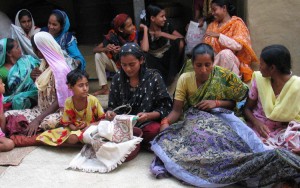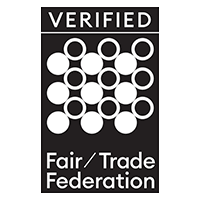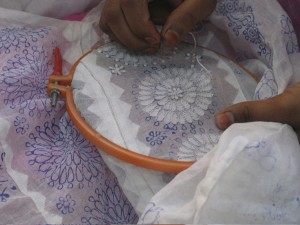Fair Trade Practices Redefine the Word Heirloom
Heirloom Quality
For the past few months I have been referring to some of Sevya’s finest creations as “heirloom quality” items. At first I was simply referring to the most common definition of “heirloom”; but after a little reflection, a more global definition of is in order. When people think of heirlooms they are usually thinking of items of special value, worthy enough to pass on to descendants. Certainly, the expertly crafted, fair trade items I have referred to in the Sevya collection fit this conventional definition. Yet a deeper understanding of the word “heirloom” would consider not only passing the item itself on to our descendants, but also passing on a heritage of sustainability, preservation and compassion to all living beings that come after us on this planet.
A New Definition of Heirloom: Leaving Behind a Better World
Perhaps it is “natural” to rely on instinct and/or logic to look out for our own flesh and blood. Yet, it is also obvious that we are all connected. The interdependency shows up in environmental, social and cultural manifestations.
Environmental
What goes in our air, soil, water and food affects us. If entities produce outwardly beautiful garments but poison the workers, the soil, water and air, they really have not produced a beautiful garment at all. In fact they have produced something of a nightmare that future generations will have to deal with. Artisan cooperatives that weave Sevya garments use zero electricity. This fact, along with non-toxic application of dyes, is a primary means of promoting positive environmental stewardship. In fact, consumers can choose fair trade cotton garments with ayurvedic, herbal medicinal dyes. Very few garments in the world are as responsibly made.
Social
The World economy is made up of countless relationships where exchanges are made between winners and losers, losers and losers, and, sometimes, between winners and winners. Unfortunately, the latter scenario is quite rare. More often than not, the empowered parties in global exchanges simply add more power and wealth to their already dominant position. The winners gain cheap goods through cheap labor and natural resources; while the losers are left with a crippling cycle of poverty and environmental destruction. Conversely, through true fair trade practices, both parties in an exchange can benefit. In order for both parties to “win” there should be great value in all facets of the exchange, and, above all else, sustainability should be attained on both sides of the exchange. Truly fair trade practices empower those who were previously powerless, while enriching and invigorating the lives of those who purchase the healthy produce and beautiful keepsake items.
Fair trade organizations such as Sevya contribute to a movement where schools are built, educations are attained, and healthy, sustainable livelihoods are created for entire communities. On the other side of the exchange, a much deeper, more purposeful engagement in our planet’s future can be attained by those who purchase these goods. It is up to we who invest in fair trade goods to come up with a perspective that truly creates heirlooms—in this deeper, more global sense of the word-- through these exchanges.

A group of artisans using traditional embroidery techniques. Sevya supports traditional practices in production for the fair trade wholesale and retail markets.
Cultural
Fair trade practices demand that traditional cultures are respected through the creation of sustainable sources of employment. Another way cultural traditions are respected is through the support for artisan communities where traditional approaches to religion, medicine and all other facets of culture are allowed to thrive. For example, unlike in factory production models, artisan communities where Sevya products are made often take long breaks to celebrate religious holidays. Many more examples can be found throughout Sevya's production of retail and wholesale scarves, clothing and other items in artisan communities.

One of many beautiful heirloom quality fair trade scarves with a lovely example of fair trade jewelry-- brass cuff bracelet.
Our world is constantly changing, and our children will inevitably inherit the effects of changes we set in motion. Perhaps the fact that fair trade practices are currently creating powerful, sustainable solutions in our world is worth our respect, our best efforts and our support. We really can leave the finest possible heirloom for our descendants: a healthy, sustainable world.
Sevya offers a wonderful variety of heirloom quality items, in both the conventional and this more global definition of “heirloom.” Looking through our collections is a feast for the eyes. Many elegant and refined examples can be found in our collection of fair trade clothing, scarves, jewelry, home décor, bedding, cards and more. Consider a purchase of a true heirloom today!
Jerry Rasch writes articles such as this as a part time but full-hearted pursuit.


